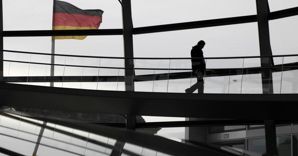Growth of the economy to fall short of expectations in the second quarter of 2016. The GDP, adjusted for calendar effects and seasonally adjusted, remained unchanged in the period April-June from the previous quarter (in which It had increased by 0.3% on a cyclical basis) and increased by 0.7% on an annual basis. This was communicated by Istat spreading the preliminary estimate. The second quarter of 2016 – says the Mayor – has had one working day more than the previous quarter and more than in the second quarter of 2015. The change gained in 2016 the Italian GDP (ie annual growth would be achieved in the presence a quarterly change anything in the remaining two quarters of the year) amounted to 0.6%.

Padoan: “In the budget law a few steps, all for growth”
Treasury: fragile growth but accounts under
given on retainer GDP “is not a surprise,” said the Treasury in a statement explaining that depend on phenomena such as, among others, the threat of terrorism, the crisis of migrants and Brexit. Elements “were known for some time.” The Treasury also emphasizes that “different sources of Government, including the MEF, had already reported that the growth estimates made in April with Def would be challenged by this new scenario.” It reassures that “despite the growth is more fragile than expected, the public finances are under control, as evidenced by the performance of the public sector borrowing requirement.”
As for debt relief, reported today by the Bank of Italy on the rise, “the privatization of ENAV – continues the statement of the Treasury – has achieved a good result” and the plan to sell a further stake in the Italian Poste actions “will provide a useful contribution to bring the targets set in April.” In the note the MEF also drawn to the interview with Il Sole 24 Ore in which the Minister of Economy anticipates that the budget law for 2017 will focus limiitate available resources “on a few measures for growth.” It reiterates the government’s strategy of insisting on stimulating investment.
% change over the previous quarter
Cala value added in industry
the quarterly change in gross domestic product, says the national Institute of statisca in statement released today, is the synthesis of an increase in value added in the agriculture and service sectors and a decrease in that of ‘industry. On the demand side, there is a slight negative contribution of domestic component (gross inventories), offset by a positive contribution from net foreign component.

Germany now “sees” a growth of 2% in 2016
The international comparison
the same period of the second quarter, reminiscent of the ‘ Istat, GDP increased by 0.6% in quarterly terms in the United Kingdom and 0.3% in the US, whereas there was no change in France. Italy’s result is all the more disappointing when you consider, according to Eurostat data released today, the average growth in the Eurozone was 0.3% (+ 0.4% in the EU-28). Who does very best of Italy was certainly Germany. Figures released today indicate that the German GDP grew by 0.4% over the previous quarter. The figure was better than economists’ forecasts who expected a 0.2% growth. In the first quarter gross domestic product in Germany grew by 0.7%
Estimates revised downwards
The growth of the Italian GDP in the first quarter was 0.3% compared to the last quarter of 2014. At the end of May, the cyclical variation in expected GDP ISTAT for the second quarter was estimated at + 0.2%, with a “fork” of between 0 and + 0.4%. The estimate of a photographer today, then the lower part of the fork. Already in the monthly note to June, the national statistical agency had spoken of slow growth “in the near term” and Italian economy that continues to grow “at a moderate pace.”
GDP, a slowdown which complicates the scenario autumn
Learn more
It weighs the Brexit effect. So much so that both Confindustria Bankitalia in their latest estimates have predicted a GDP growth in 2016 of just under 1% (in area 0.8%) this year. Even the IMF has revised downwards its estimates of Italian growth. In late September the government will present the Def update note to the new macroeconomic framework, with the updated forecasts on the economy. But already the Deputy Minister of Economy today, Enrico Morando, admitted that the growth target set for 2016 by the government, ie 1.2%, “appears at risk”
opposition to the attack: numbers testify failure Renzi
The opposition meanwhile attacks. “The catch to the pole in the second quarter GDP and the public debt reaches record low of 2.2488 trillion are two unequivocal data that testify to the power of numbers the failure of the economic policy of the government,” says Paolo Romani, president of the group of Forza Italy in the Senate. “Italy, growth stops and public debt to 2.248 billion records. Monti, Letta and Renzi, same promises and the same failures. #renziacasa “says Facebook Matteo Salvini, secretary of the Northern League. He is echoed by the President of the Brothers of Italy, Giorgia Meloni, who writes: “The GDP slows further and Italy has the worst performance in Europe. Blame the owls or the ineptitude of our government? Also bordered by Five stars. “You can see why Renzi prefers to talk about institutional reforms, centralizing attention on his political future. It is a desperate strategy to hide its tragic economic failures, “say the leaders M5S House and Senate, Laura Castelli and Stefano Lucidi.
© All rights reserved
No comments:
Post a Comment